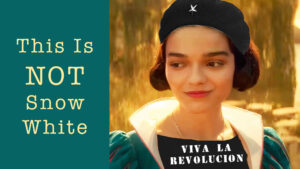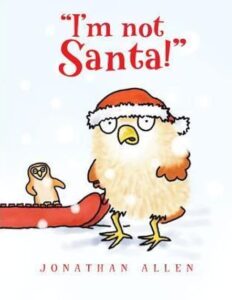Back when I was a teenager, Film Threat was a zine that was obligatory reading for anyone who wanted to be in the know about movies. Teenage me is doing backflips, because I’m delighted to say that I’ve got an article printed over there. Unfortunately my topic isn’t quite so happy. I’ve covered which historic film sites were saved, damaged, and lost in the terrible fires that recently hit Los Angeles. It’s really important to document these losses, because that will be the only way some of these places will ever be remembered.
Check out my article here:
Famous Film Sites Lost to the Los Angeles Fires
Archive Copy: “Famous Film Sites Lost to the Los Angeles Fires” by T.Q. Townsend, published in Film Threat on January 27, 2025.
The scale of the fires that have scorched Los Angeles is overwhelming. Thousands of structures have been destroyed or damaged, including sites that were part of Hollywood film history. Lives and buildings lost can be counted, but it is harder to quantify the cultural damage of the Palisades and Eaton Fires. Some sites important to movie history came dangerously close to going up in smoke, and others are lost forever.
What Survived
The Palisades fire spread rapidly, but firefighters were able to curb it before it reached the intersection of Mulholland Highway and Las Virgenes Road, sparing famous film sites such as King Gillette Ranch and Malibu Creek Park. This area has been a popular filming location as far back as 1919 when the Mary Pickford film Daddy-Long-Legs was shot at Malibu Creek’s Rock Pool. Planet of the Apes (1968), Beneath the Planet of the Apes (1970), and Battle for the Planet of the Apes (1973) were filmed at multiple locations in Malibu Creek. Because this area was saved, fans will still be able to find one of the cages from Beneath the Planet of the Apes sitting alongside Cage Creek Trail. Hikers will also still be able to visit the old M*A*S*H* set after a pleasant walk through sagebrush-covered hills serenaded by Malibu’s famous feral parakeets.
The Eaton fire crept within inches of NASA’s Jet Propulsion Laboratory, whose projects have inspired filmmakers for decades. It is not possible to overstate the influence that the space program has had on writers, artists, and filmmakers, and any damage to JPL would have been a loss not just for science but also for the arts. Any film or television show that makes mention of space probes, planetary rovers, or deep space exploration owes something to this facility. Star Trek: The Motion Picture (1979) was centered on JPL’s Voyager Program, a project which is still running today after more than fifty years, and Ridley Scott’s film adaptation of The Martian (2015) was shot extensively on location at JPL. The Eaton Fire was halted before it could consume the Jet Propulsion Laboratory, which is great news for fans of both science and science fiction.
What Didn’t
Western film history has taken two severe losses. In the Palisades, the Will Rogers House has been destroyed. Rogers was one of the first movie cowboys and is still considered the greatest trick roper of all time. Rogers wrote many of the title cards for his silent films, and his legendary wit crossed over perfectly to the “talkies,” and he was the first to utter the sort of one-line quip that is now common in comedy and action films. His Palisades ranch was where he did much of his writing. Rogers’ estate was given to the people of California by his widow and, for 80 years, has been a public park, with his home sitting at the heart of a network of hiking trails and recreational land. The site was used as a filming location for many films, including Star Trek IV: The Voyage Home (1986) and The Parent Trap (1998). While the Will Rogers House will never welcome visitors again, hikers and filmmakers will hopefully one day return to this site.
Several schools have been damaged or destroyed by the fires, most notably Palisades Charter High School. Nicknamed “Pali” by locals, this school was an excellent example of mid-century California school architecture with its red brickwork, green courtyards, and gently zig-zagged rooflines. The neighborhood around the school is close to the beach and major film studios, making it popular with parents who work in film and television. Unsurprisingly, Palisades Charter High School has a lengthy list of alumni who are second-, third-, and even fourth-generation film professionals. About half of the campus remains, so hopefully, films including Carrie (1976), Crazy/Beautiful (2001), and Freaky Friday (2003) will not be the last to be shot at this location.
The Topanga Ranch Motel stood as a cheerful landmark along the Pacific Coast Highway for nearly 100 years before it was consumed by the Palisades Fire. The sight of it always brought instant nostalgia for the tiny beach shacks that used to be sprinkled along the coastline before they were steadily replaced by view-blocking McMansions. As one of the last surviving examples of bungalow-style motel architecture, this site was featured in many films and TV shows, including Mannix (1967-1975) and Blue City (1986). Publishing magnate William Randolph Hurst constructed the motel in 1929, and over the years, its cheerful red and white bungalows housed the construction workers who built the Pacific Coast Highway, writers in search of a quiet place to finish a script, and families who wanted to enjoy the soft white sand of Malibu’s shores.
For Angelenos, the Topanga Ranch Motel was always a welcome sight, preserving a glimpse of Los Angeles as it was when the movie industry was just getting started. The motel survived a demolition attempt by developers in the 1980s, and California State Parks acquired the property in 2001. The motel sat derelict for 20 years, but the plans to renovate and reopen it as a piece of living history will now never come to be. Film fans will never again see the Topanga Ranch Motel on the highway that winds from the Palisades to Camarillo unless they put on some old episodes of Remington Steele.
Twenty-five miles to the northeast of the Palisades, the Zane Grey Estate in Altadena was destroyed by the Eaton Fire. Built in 1907, it was a magnificent Mediterranean Revival-style mansion offering views north toward the rugged foothills and south toward the Arroyo Seco. Grey was one of the creators of the genre of Western novels, and he founded his own movie production company to bring his stories to the screen. Grey was not only one of the first authors to see his novels turned into films but also one of the first to be disgusted by the liberties filmmakers took with his stories and characters. Many of the tropes in Westerns began with Grey’s books and films, and his home, where so many stories and scripts were penned, is a loss to film history. The irony is that the Zane Grey Estate had been constructed out of concrete in order to be fireproof, as its first owner was a survivor of the deadly Iroquois Theater Fire that happened in Chicago in 1903.



